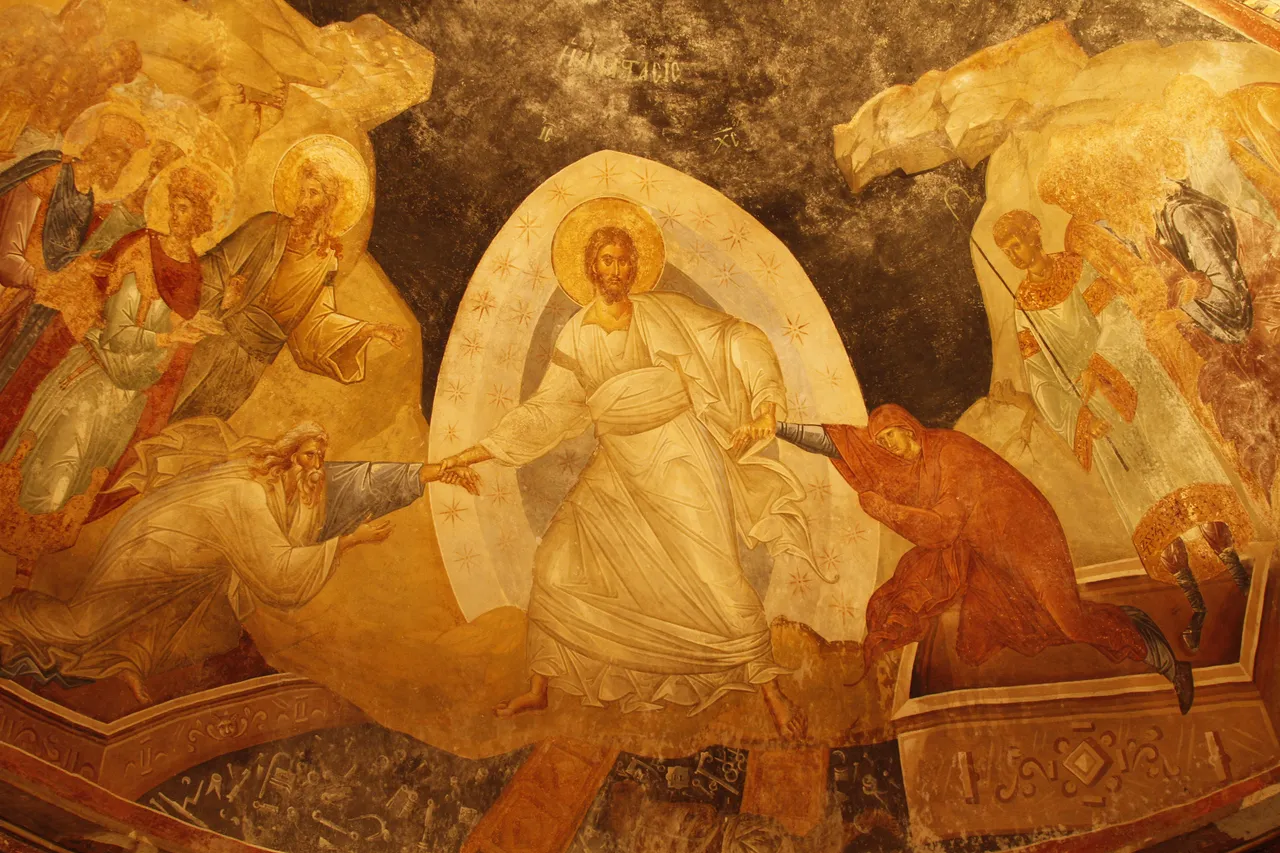Jesus in the Underworld?

The Christian affirmation of belief in Jesus descent to Hades is in the Apostles Creed and in the so-called Athanasian Creed as well as being article III in the Anglican Thiny-Nine Articles. The Biblical origin for this belief which is a major and normative part of Christian tradition, seems to be based on a particular interpretation of I Peter 3:19 (‘In the spirit he (Christ) went and preached to the imprisoned spirits’). Not surprisingly, that statement encouraged later generations of Christians to elaborate what was meant by Jesus’ appearance before imprisoned spirits. The apocryphal stories of Jesus descent to the underworld reflect those elaborations.
The main text describing these events is the fifth-sixth century Descensus ad lnferos (the Descent of Jesus to Hades) found in several manuscripts as the second half of the Gospel of Nicodemus, the first half being the Acts of Pilate.
In this tradition Jesus arrival in Hades after his death by crucifixion spells the end of death as a permanent state. ‘Hades’ by transference is the domain of the character Hades (known elsewhere in mythology as Pluto). He rules over the world of departed spirits. This realm seems close to the idea of the Hebrew Sheol (in the creeds the word ‘hell’ is erroneous and confusing). Hades is not hell or Tartarus – those are names for the place of eternal punishment and the opposite of heaven the place of the eternally blessed.
The age-old cycle of death and decay inaugurated by Adam’s sin is now said to have been reversed by Christ’s inability to be bound by death. This orthodox belief, so strongly present in the New Testament Gospels and in Paul’s writings, is in effect dramatized in the Descensus. Another orthodox belief dramatized in this apocryphon is that the faithful will be raised from death because Christ is the first-fruits of those raised. This belief is graphically illustrated by Christ leading Adam and all others out of Hades and into paradise. Among those appearing in this Gospel is a favorite character in the apocryphal writings, the repentant thief crucified alongside Jesus: he is on his way to paradise direct, just as Jesus had promised, when he encounters the newly raised procession.
The first extract from this text shows the two characters, Satan (that supreme embodiment of evil, the devil, the adversary of God) and Hades, aware of Jesus’ imminent arrival in their midst. They are powerless to stop his descent. Other extracts tell of Jesus arrival and his triumph over Satan. The faithful are then released. The whole narrative is presented as a written account commissioned by the Chief priests of the Jerusalem Temple from the newly resurrected sons of Simeon: the men tell their story as eyewitnesses of the events in Hades.
Another text which parallels in part the Descensus is the Questions of Bartholomew, dated perhaps as early as the second century. In that book Bartholomew confronts Jesus in the period before his Ascension. Bartholomew questions Jesus’ whereabouts after his crucifixion (when he is said to have vanished from the cross). Jesus’ reply is remarkably consistent with the story in the Descensus. Other questions are posed by Bartholomew including his request to meet the adversary of men – called here Beliar (Beliar is usually known as Belial in the Bible, in the Dead Sea Scrolls, and also in Milton’s Paradise Lost, where he is the fallen angel who represents impurity).
The scene when Christ releases the faithful from Hades (often called the Harrowing of Hell) was a popular episode in the Middle Ages. The saddlers’ performance of this scene in the York cycle of mystery plays is the climax of the conflict between God and the devil for possession of the souls of men.



